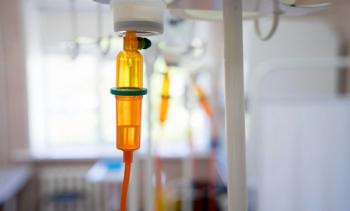
Leukemia Rates Falling, but AML, CLL Are Exceptions
A new analysis of nearly 3 decades of data suggests leukemia rates are falling, except for 2 specific types.
The overall incidence of
Those are the key findings of a new analysis based on a global disease database. The study was published in the journal
Rates of leukemia can vary widely among different demographic groups, and can be impacted significantly by environmental factors and family history. Efforts to combat the disease have also led to significant differences in country-to-country rates, and thus an accurate counting of rates is essential to assess prevention measures and better understand the challenges ahead, according to corresponding author Qi Wang, MD, of the Second Affiliated Hospital of Zhengzhou University, in China, and colleagues.
The investigators decided to study the matter by querying the Global Burden of Disease online database, which collects data such as disease and injury rates, and also risk factors of populations around the world. Cases of leukemia were identified using ICD-10 codes. After taking the raw data from 1990 through 2017, the authors calculated age-standardized incidence rates (ASIR) in order to account for fluctuations in a given country’s age structure.
The total number of cases of leukemia rose from 1990 to 2017, from 354,500 to 518,500 worldwide. However, the ASIR showed rates fell significantly, with an average decrease of 0.43% per year. The drop was more pronounced in females than in males. When stratified by age, only the oldest group (those aged 70 and above) saw an increase in ASIR over the time span. The authors also found regional variance. Whereas in 1990 Western Europe and the Australasia region had the highest ASIR of leukemia, by 2017 East Asia was the region with the highest incidence. On a country level, Syria had the highest ASIR in 2017, followed by the United Kingdom, Denmark, and Lebanon.
However, the investigators’ most striking finding had to do with rates of AML and CLL.
The ASIR of AML went from 1.35 cases per 100,000 to 1.54 cases per 100,000 between 1990 and 2017. A total of 127 countries experienced a statistically significant increase in cases over that time.
In CLL, the ASIR rose by 0.47% per year, on average, and more than 85% of countries experienced an increase, the authors found.
By 2017, 17.5% of leukemia cases were CLL, up from 10.7% in 1990. The proportion of AML cases rose from 18.0% to 23.1% over the same time period.
Rates of other types of leukemias, such as chronic myeloid leukemia (CML) and acute lymphoblastic leukemia (ALL), fell.
Wang and colleagues offered theories as to why AML and CLL rates increased despite the overall downward trend.
“The rise of AML incidence was partly due to an increasing prevalence of therapy for AML as more patients treated with cytotoxic chemotherapy are cured of their primary malignancy,” they wrote. “For CLL, previous studies reported a strong birth-cohort effect underlying this increasing trend and suggested that lifestyles and environmental factors may play a role in the development of CLL.”
While more study might help explain the disparities in the data, the investigators said providers should focus on educating patients about ways to reduce exposure to chemical risk factors. They added that the heterogeneity of the data from country-to-country suggests public health factors will need to be tailored on a localized level to achieve the biggest impact.
Reference
Dong Y, Shi O, Zeng Q, et al. Leukemia incidence trends at the global, regional, and national level between 1990 and 2017. Exp Hematol Oncol. Published online June 19, 2020. doi:10.1186/s40164-020-00170-6
Newsletter
Stay ahead of policy, cost, and value—subscribe to AJMC for expert insights at the intersection of clinical care and health economics.









































